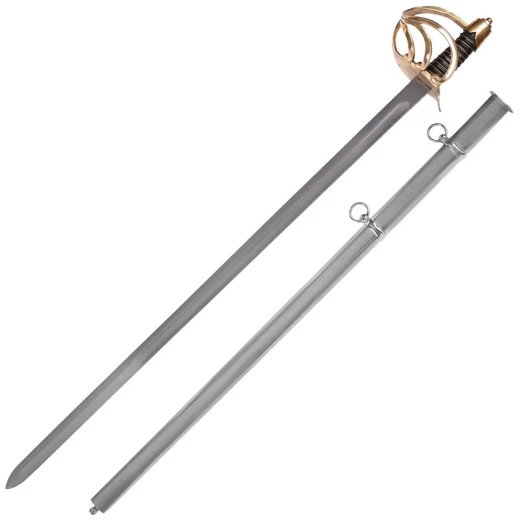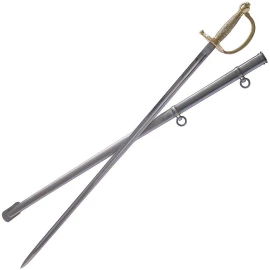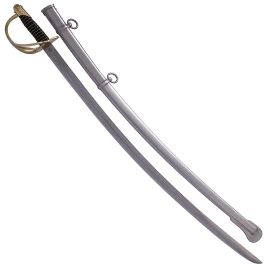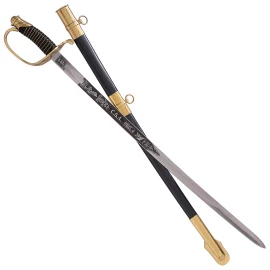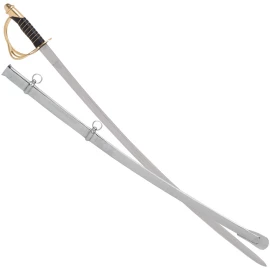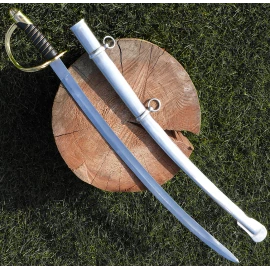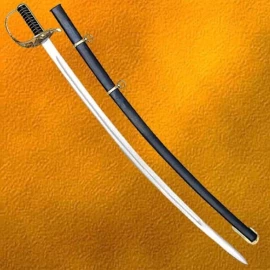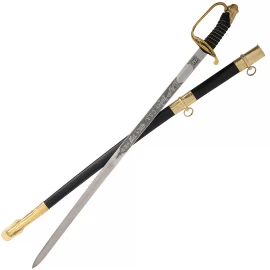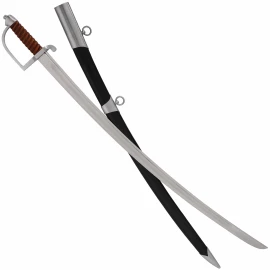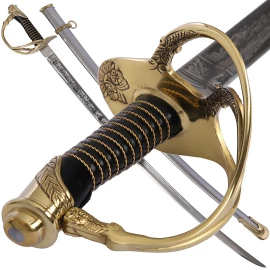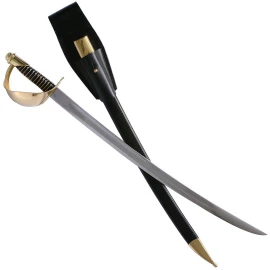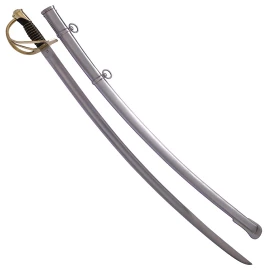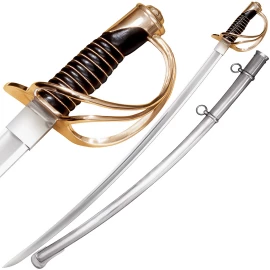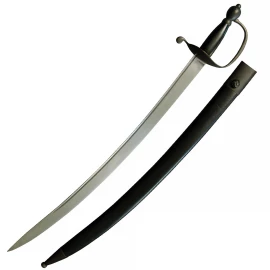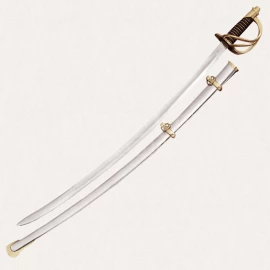U.S. Heavy Cavalry Sword with Steel Scabbard
This beautiful, good value sword is not a one-to-one replica of an original historical piece, but is based on a French design which was quite popular with officers and common soldiers alike on both sides of the conflict (and was used by many countries during the 19th century). More information...
Notify me when the item is in stock.
We will inform you as soon as we stock up.
U.S. Heavy Cavalry Sword with Steel Scabbard
The straight EN45 spring steel blade is fullered on both sides. The broad fuller runs the top half of the blade along the spine and ends about two thirds down the blade. The unsharpened edge is about 0.8mm thick and the blade's full tang is peened to the pommel.
The generously sized hilt is composed of a guard plate from which four bars extend upwards to connect with the sturdy pommel. The four-bar-guard and the pommel cap are crafted from brass and come with a nice patina. The grip's core is made of wood and wrapped in black leather and twisted brass wire.
The cavalry sword is delivered with an all-steel scabbard with two carrying bands, articulated suspension rings and a ball-shaped finial or shoe.
Please note that this sword is not a battle ready weapon. It is designed as a collector's or decoration/display piece and is not suited for combat reenactment. Besides its quality as a collectible, it is also perfectly suited as a prop.
- Material: EN45 spring steel (high carbon steel, not stainless), antiqued brass hilt, leather-covered and brass-wire wrapped wooden handle
- Overall length: approx. 106cm
- Blade length: approx. 90cm
- Hilt length: approx. 14.5cm (grip approx. 10cm)
- Max. blade width: approx. 3cm
- Blade thickness: approx. 4mm (upper third towards the point approx. 0.8mm)
- Cutting edge: approx. 0.8mm
- Point of balance: approx. 17.8cm from the guard
- Incl. metal scabbard with carrying rings
- Weight without scabbard: approx. 1.3 kg
- Weight with scabbard: approx. 2 kg
Specs may slightly vary from piece to piece.
The steel used here is not rust-proof and might show slight surface tarnishing in places. We recommend you to maintain the blade and the scabbard on a regular basis, for example using Ballistol Universal Oil, which is ideally suited for steel care.
During the American Civil War (1861-1965), swords and sabres were not only produced directly on American territory but also imported en masse from Europe by both the Union and the Confederate States, which explains why surviving originals exist in many variations.
We are here for you


